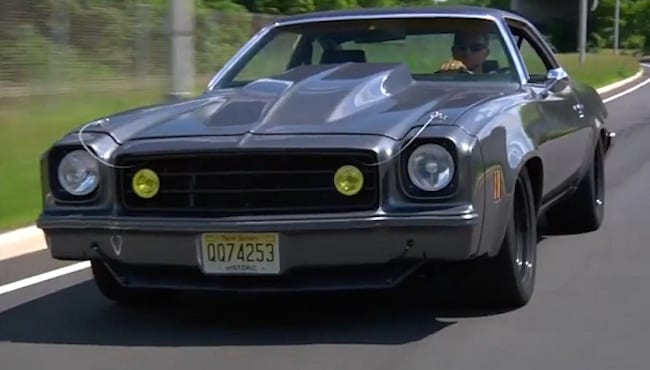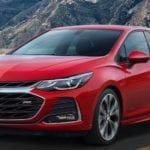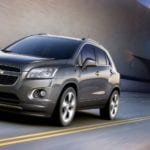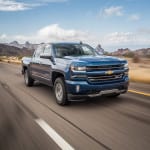Chevy is one of the most popular automotive brands in the world, explaining their dedicated and passionate fan base. Still, we’d reckon there is a handful of Chevy models that even the biggest enthusiast has forgotten about.
The majority of the vehicles you’re about to see were from the 1970s, and most of them only lasted two or three years on the market. However, they’ve certainly made an impact on the company, as many of the vehicles eventually evolved into the Chevy models we know and love today.
Although it’s unlikely that you’ll find any of these vehicles at car lots, we can still appreciate what these forgotten trailblazers did for our favorite automotive company…
Chevy Kingswood
The four-door station wagon looks like it’s taken straight out of a 1970s movie. Unfortunately, the vehicle didn’t last long enough to make any Hollywood appearances. Besides a brief release from 1959 through 1960, the vehicle was only available from 1969 to 1972.
The engineers wanted a completely new design with the Kingswood, explaining the low, futuristic headlights and taillights and the flat, wing-like tailfins. The wagon was also the longest vehicle in its price range, featuring a 119-inch wheelbase and a 211-inch length. The nine-passenger vehicle originally featured a trio of engines: the 3.9-liter Blue Flame strait six, the 4.6-liter Turbo Fire small block V8, and the W-series Turbo Thrust big block V8.
The vehicle was discontinued in 1961, but a revamped version showed up nearly ten years later. Based on the Impala, the new Kingswood hit the market in 1969, offering three large engine options (5.7-liter V8, 6.6-liter V8, and 7.4-liter V8).
By 1973, the Kingswood nameplate (along with the Townsman and Brookwood) was phased out in favor of the Bel Air, Impala, and Caprice.
Chevy Townsman
The Townsman followed a similar path as the Kingswood: it was released in the late 1950s, removed from the market soon after, rereleased in the early 1970s, and retired by 1973.
When the full-size station wagon was first released in 1953, it was generally regarded as a station wagon version of the luxury Bel Air. The eight-passenger vehicle featured an inline six-cylinder engine for it’s entire run, up until the Townsman’s apparent demise in 1957.
The nameplate was rebooted in 1969, and this time it was based on the General Motors B platform. The six- or nine-passenger vehicle was regarded as more luxurious than the Chevy Brookwood, but it was still held in lesser regard than the Chevy Kingswood or Kingswood Estate. The vehicle included a V8 engine and (from 1971 on) a Turbo HydraMatic transmission.
The Bel Air nameplate eventually replaced the Townsman, along with the previously mentioned Impala and Caprice.
Chevrolet Chevelle Laguna
The mid-sized automobile has perhaps one of the most recognizable styles in the brand’s history. However, the nameplate’s limited production run ultimately stunted some of that popularity.
A part of General Motors’ A-Body platform, the Laguna was the top-line series of the respective year’s Chevelle. The vehicle wasn’t necessarily an instant success upon its release in 1973, as it only accounted for about 100,000 of the Chevelle’s 1.7-million third generation sales. Still, there was no denying that the Laguna was an impressive and stylish ride, especially for the 1970s.
There were several ways the Laguna separated itself from the rest of the Chevelle models. There were the distinctive front and rear styling, which included a body-colored urethane front end (hiding the five mile per hour bumper system), a diecast chrome grille, a body-colored rear bumper, chrome taillight bezels, and (of course) the Laguna fender nameplate badge. The interior was all decked out as well, featuring all vinyl upholstery, map pockets in the door trims, a “deep-twist” carpeting and wood vinyl accents. There’s no doubt that the engineers wanted their vehicle to scream “luxury,” and it’s apparent that they succeeded.
Perhaps the most significant attribute of the original Chevelle Laguna was the redesigned body, which featured a longer wheelbase (112 inches for coupes, 116 inches for sedans/station wagons), a sturdy perimeter frame, a large real axle, new body mounts, and so much.
The vehicle came standard with a 145-horsepower, 350-cubic-inch two-barrel V8 engine, but Laguna owners had the exclusive option of alternately opting for the 175-horsepower, 350 four-barrel V8 engine or the 245-horsepower 454 four-barrel V8 engine. The three-speed manual transmission was standard, but drivers had the option of a four-speed manual and a Turbo Hydra-Matic three-speed automatic.
Speed and Superstar magazine commended the vehicle in their June 1973 “Street Test”, saying “[w]e couldn’t pass up the opportunity to tell you what a groovy all around car it is even if it can’t smoke the quarter-mile run in 13 seconds. And what car in ’73 can…It’s not overpowering but it’s enough – and so comfortable that the editor bought the car…The Laguna is the type of car you want to own for fast, comfortable transportation in quiet luxury.”
The vehicle eventually made a name for itself in NASCAR competitions, as driver Cale Yarborough earned two straight Winston Cup Championships while driving the Laguna.
Chevy Monza
The subcompact, four-passenger vehicle shared the same wheelbase, width and inline-four engine as the Chevy Vega, but the Monza (unfortunately) wasn’t nearly as successful. This was a relative surprise, as the sporty vehicle was expected to be a hit. In fact, John DeLorean (iconic engineer) deemed it the “Italian Vega” due to the resemblance to the Ferrari 365 GTC/4.
Released in 1975, the vehicle was actually supposed to feature the GM-Wankel rotary engine, but poor fuel economy and issues with emissions compliance led to the unit’s cancelation. In its place, engineers included a 4.3-liter V8 engine in addition to the previously-mentioned 78-horsepower 2.3-liter unit. The vehicle ended up being highly regarded upon its release, winning Motor Trend’s Car of the Year award for 1975.
The vehicle saw some changes over the coming years, like the inclusion of a 140-cubic inch four-cylinder engine and 5.0-liter V8 engine. Eventually, the brand decided to retire the nameplate, letting the Camaro and Citation X-11 take the Monza’s place on the sport-coupe market. Over its six-year run, the company produced 731,504 Monzas. The vehicle ended up being a popular choice in motorsports, particularly in Australia.
Chevy LUV
This tiny pickup truck first hit the market in 1972, and customers quickly fell in love with the “light utility vehicle.” The vehicle was a take on the Isuzu Faster, a popular pickup in the Japanese market. The second generation took over in 1980, and that was replaced by the third generation in 1988.
When the fourth generation was released in 2005, the LUV nameplate was replaced by the D-Max. The present day take on the vehicle is the Isuzu D-Max, which generally isn’t available in the United States, although you may see some Chevy or pickup fans driving around a modified version. Rumors persist that the LUV will eventually return to the US, but none of those whispers have been confirmed.








